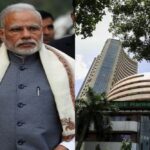How much does Sri Lanka owe the world?
In 2019, the national debt of Sri Lanka amounted to around 64.23 billion U.S. dollars.
Sri Lanka’s snowballing economic crisis began with an inability to import essential goods after the coronavirus pandemic torpedoed vital revenue from tourism and remittances. The government imposed a wide import ban to conserve its foreign currency reserves and use them to service the debts it has now defaulted on.
The Indian Ocean island nation of 22 million people is struggling to pay for essential imports after a 70% drop in foreign exchange reserves in two years led to a currency devaluation and efforts to seek help from global lenders.
Amid its worst economic crisis in memory, Sri Lanka has been bit by severe shortages of essentials like food, medicine, milk powder, cooking gas and fuel, with people waiting in long queues to get petrol, and diesel. Residents are enduring daily power cuts due to a shortage of fuel to operate the generating plants and dry weather has sapped hydropower capacity. The Central Bank allowed the local currency to free float earlier this month, causing a sharp increase in prices.
Food shortage in Sri Lanka
Due to inflation, there has been a huge jump in the prices of food and drinks in the island nation. People have to wait in queues for hours to buy food groceries. Consumers are complaining about the prices of essentials in both supermarkets and the weekly open-air markets that are institutions in some urban pockets. Their griping is understandable since food inflation rose to 20% year-on-year in December and topped 24.4 % in January. Economists have noted that Sri Lanka’s domestic inflation — now 16.8% — has become the second-highest in Asia, after Pakistan.
Sri Lanka to buy 75,000 tone’s rice from India
Sri Lanka has contracted to import 75,000 metric tonnes of non-basmati rice from India to meet its immediate requirement.
“We have contracted to import of 75,000 tones of superfine non-basmati Pooni rice and have been told to complete the shipment by December by exporters in India,”
India, the world’s biggest rice exporter, last month agreed to provide the $1 billion credit line to help ease crippling shortages of essential items, including fuel, food and medicine.
The rice shipments could help Colombo bring down rice prices, which have doubled in a year, adding fuel to the unrest.
“Rice loading has started in southern ports,” said B.V. Krishna Rao, managing director of Pattabhi Agro Foods, which is supplying rice to Sri Lanka State Trading (General) Corp.
Sri Lanka has become a net importer of rice as its production fell after Colombo banned all chemical fertilizers in 2021, a move that was later reversed.
Indian traders are likely to start shipping other essential commodities like sugar and wheat in the coming weeks, the dealer said.
India’s state-run National Agricultural Cooperative Marketing Federation (NAFED) will supply the non-basmati parboiled rice within 60 days after signing the deal, which will take place soon, food ministry officials said.
| COMPANY | PRICE | MARKET CAP | ROCE % |
| CHAMANLAL SETIA | 143.15 | 616.CR | 29.5% |
| L T FOODS | 92.55 | 2960.CR | 21.67% |
| KOHINOOR FOODS | 76.85 | 36.60 CR | 7.81% |
| KRBL | 248.00 | 5842.CR | 19.9% |
Chaman Lal Setia
NSE -0.04 % was up 4.56 per cent at Rs 100.95 around the same time, while
On Standalone basis, Chaman Lal Setia reported a total income and profit of Rs 220.85 Cr and Rs 15.98 respectively for quarter ending result Quarterly Result list year Ending. Total Income and profit for the year ending 2021-03-31 was Rs 854.80 Cr and Rs 82.01 Cr.
Last 1 Month: Chaman Lal Setia share price moved up by 25.41%
Last 3 Months: Chaman Lal Setia share price moved up by 16.01%
Last 3 Years: Chaman Lal Setia Share price moved up by 41.66%
LT Foods
LT Foods share has a market capitalization of Rs 2,952.17 Cr. Within Agro Processing sector, it’s market cap rank is 4
Last 1 Month: LT Foods share price moved up by 36.63%
Last 3 Months: LT Foods share price moved up by 19.74%
Last 12 Months: LT Foods share price moved up 37.65%
Last 3 Years: LT Foods Share price moved up by 147.99%
Kohinoor Foods
NSE 4.49 % was trading 7.93 per cent higher at Rs 81 around 9.50 am (IST). Shares of the company opened at Rs 78.50 and touched a high and low of Rs 82.20 and Rs 77.60, respectively, in trade so far.
Last 1 Month: Chaman Lal Setia share price moved up by 25.41%
Last 3 Months: Chaman Lal Setia share price moved up by 16.01%
Last 3 Years: Chaman Lal Setia Share price moved up by 41.66%
KRBL
NSE 2.07 % were trading higher by 3.77 per cent and 1.34 per cent, respectively, in the morning deals.
Last 1 Month: KRBL share price moved up by 21.03%
Last 3 Months: KRBL share price moved down by 4.00%
Last 12 Months: KRBL share price moved up 34.51%
Last 3 Years: KRBL Share price moved down by 22.54%
The investments discussed or recommended in the market analysis, research reports, etc. may not be suitable for all investors.
Investors must make their own investment decisions based on their specific investment objectives and financial position. Article only for study purpose only
Invest your Money only after consulting your financial consultant or advisors as may be necessary.
Source:- ETNOW, Business Standard, NDTV Profit
How much does Sri Lanka owe the world?
In 2019, the national debt of Sri Lanka amounted to around 64.23 billion U.S. dollars.
Sri Lanka’s snowballing economic crisis began with an inability to import essential goods after the coronavirus pandemic torpedoed vital revenue from tourism and remittances. The government imposed a wide import ban to conserve its foreign currency reserves and use them to service the debts it has now defaulted on.
The Indian Ocean island nation of 22 million people is struggling to pay for essential imports after a 70% drop in foreign exchange reserves in two years led to a currency devaluation and efforts to seek help from global lenders.
Amid its worst economic crisis in memory, Sri Lanka has been bit by severe shortages of essentials like food, medicine, milk powder, cooking gas and fuel, with people waiting in long queues to get petrol, and diesel. Residents are enduring daily power cuts due to a shortage of fuel to operate the generating plants and dry weather has sapped hydropower capacity. The Central Bank allowed the local currency to free float earlier this month, causing a sharp increase in prices.
Food shortage in Sri Lanka
Due to inflation, there has been a huge jump in the prices of food and drinks in the island nation. People have to wait in queues for hours to buy food groceries. Consumers are complaining about the prices of essentials in both supermarkets and the weekly open-air markets that are institutions in some urban pockets. Their griping is understandable since food inflation rose to 20% year-on-year in December and topped 24.4 % in January. Economists have noted that Sri Lanka’s domestic inflation — now 16.8% — has become the second-highest in Asia, after Pakistan.
Sri Lanka to buy 75,000 tone’s rice from India
Sri Lanka has contracted to import 75,000 metric tonnes of non-basmati rice from India to meet its immediate requirement.
“We have contracted to import of 75,000 tones of superfine non-basmati Pooni rice and have been told to complete the shipment by December by exporters in India,”
India, the world’s biggest rice exporter, last month agreed to provide the $1 billion credit line to help ease crippling shortages of essential items, including fuel, food and medicine.
The rice shipments could help Colombo bring down rice prices, which have doubled in a year, adding fuel to the unrest.
“Rice loading has started in southern ports,” said B.V. Krishna Rao, managing director of Pattabhi Agro Foods, which is supplying rice to Sri Lanka State Trading (General) Corp.
Sri Lanka has become a net importer of rice as its production fell after Colombo banned all chemical fertilizers in 2021, a move that was later reversed.
Indian traders are likely to start shipping other essential commodities like sugar and wheat in the coming weeks, the dealer said.
India’s state-run National Agricultural Cooperative Marketing Federation (NAFED) will supply the non-basmati parboiled rice within 60 days after signing the deal, which will take place soon, food ministry officials said.
| COMPANY | PRICE | MARKET CAP | ROCE % |
| CHAMANLAL SETIA | 143.15 | 616.CR | 29.5% |
| L T FOODS | 92.55 | 2960.CR | 21.67% |
| KOHINOOR FOODS | 76.85 | 36.60 CR | 7.81% |
| KRBL | 248.00 | 5842.CR | 19.9% |
Chaman Lal Setia
NSE -0.04 % was up 4.56 per cent at Rs 100.95 around the same time, while
On Standalone basis, Chaman Lal Setia reported a total income and profit of Rs 220.85 Cr and Rs 15.98 respectively for quarter ending result Quarterly Result list year Ending. Total Income and profit for the year ending 2021-03-31 was Rs 854.80 Cr and Rs 82.01 Cr.
Last 1 Month: Chaman Lal Setia share price moved up by 25.41%
Last 3 Months: Chaman Lal Setia share price moved up by 16.01%
Last 3 Years: Chaman Lal Setia Share price moved up by 41.66%
LT Foods
LT Foods share has a market capitalization of Rs 2,952.17 Cr. Within Agro Processing sector, it’s market cap rank is 4
Last 1 Month: LT Foods share price moved up by 36.63%
Last 3 Months: LT Foods share price moved up by 19.74%
Last 12 Months: LT Foods share price moved up 37.65%
Last 3 Years: LT Foods Share price moved up by 147.99%
Kohinoor Foods
NSE 4.49 % was trading 7.93 per cent higher at Rs 81 around 9.50 am (IST). Shares of the company opened at Rs 78.50 and touched a high and low of Rs 82.20 and Rs 77.60, respectively, in trade so far.
Last 1 Month: Chaman Lal Setia share price moved up by 25.41%
Last 3 Months: Chaman Lal Setia share price moved up by 16.01%
Last 3 Years: Chaman Lal Setia Share price moved up by 41.66%
KRBL
NSE 2.07 % were trading higher by 3.77 per cent and 1.34 per cent, respectively, in the morning deals.
Last 1 Month: KRBL share price moved up by 21.03%
Last 3 Months: KRBL share price moved down by 4.00%
Last 12 Months: KRBL share price moved up 34.51%
Last 3 Years: KRBL Share price moved down by 22.54%
The investments discussed or recommended in the market analysis, research reports, etc. may not be suitable for all investors.
Investors must make their own investment decisions based on their specific investment objectives and financial position. Article only for study purpose only
Invest your Money only after consulting your financial consultant or advisors as may be necessary.
Source:- ETNOW, Business Standard, NDTV Profit




